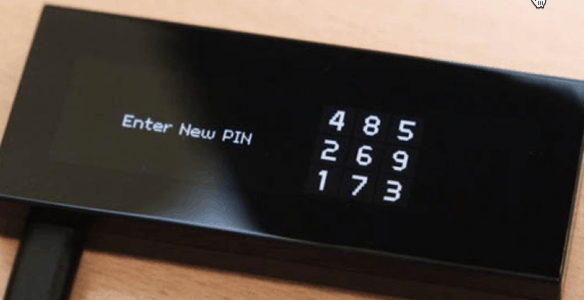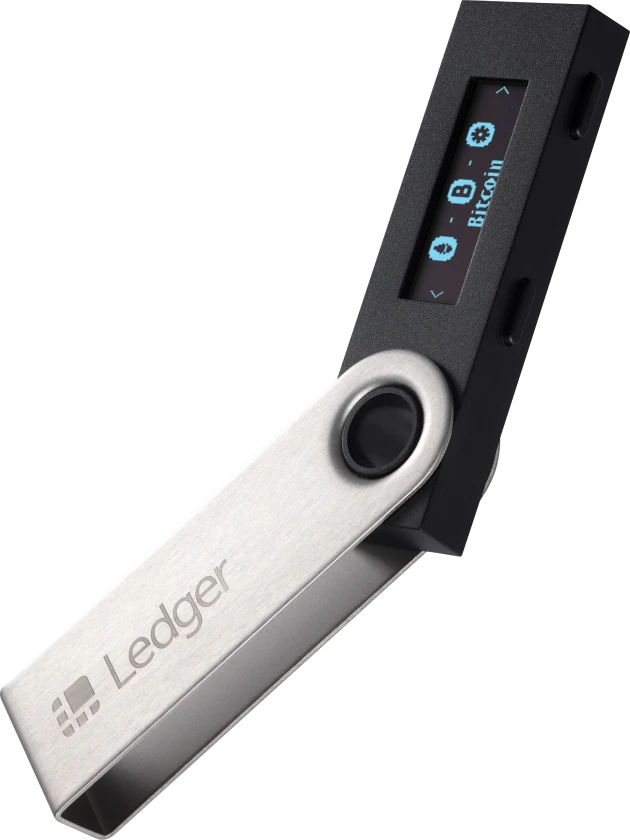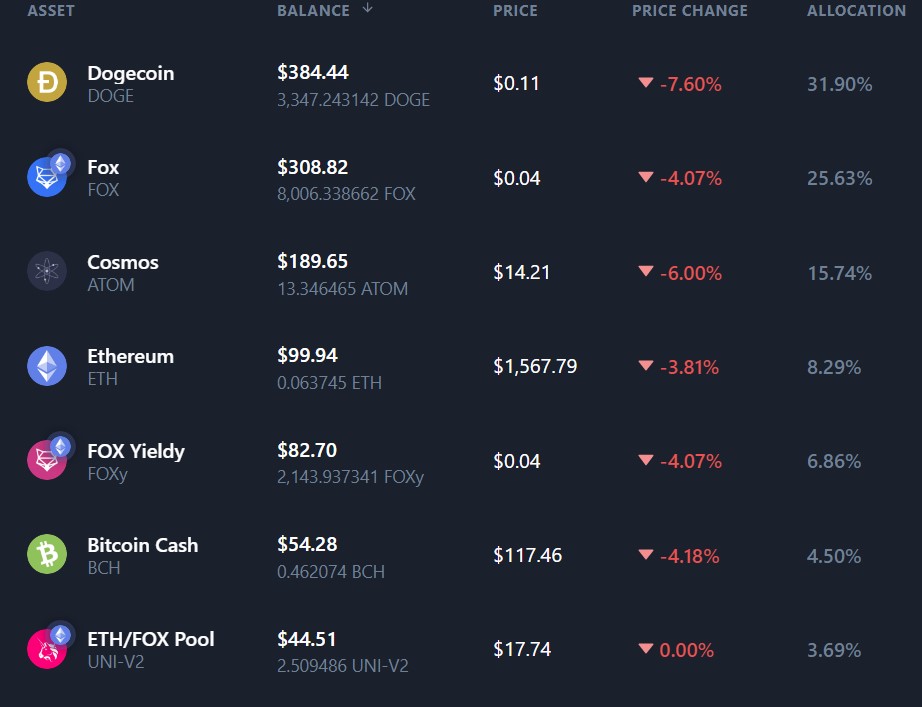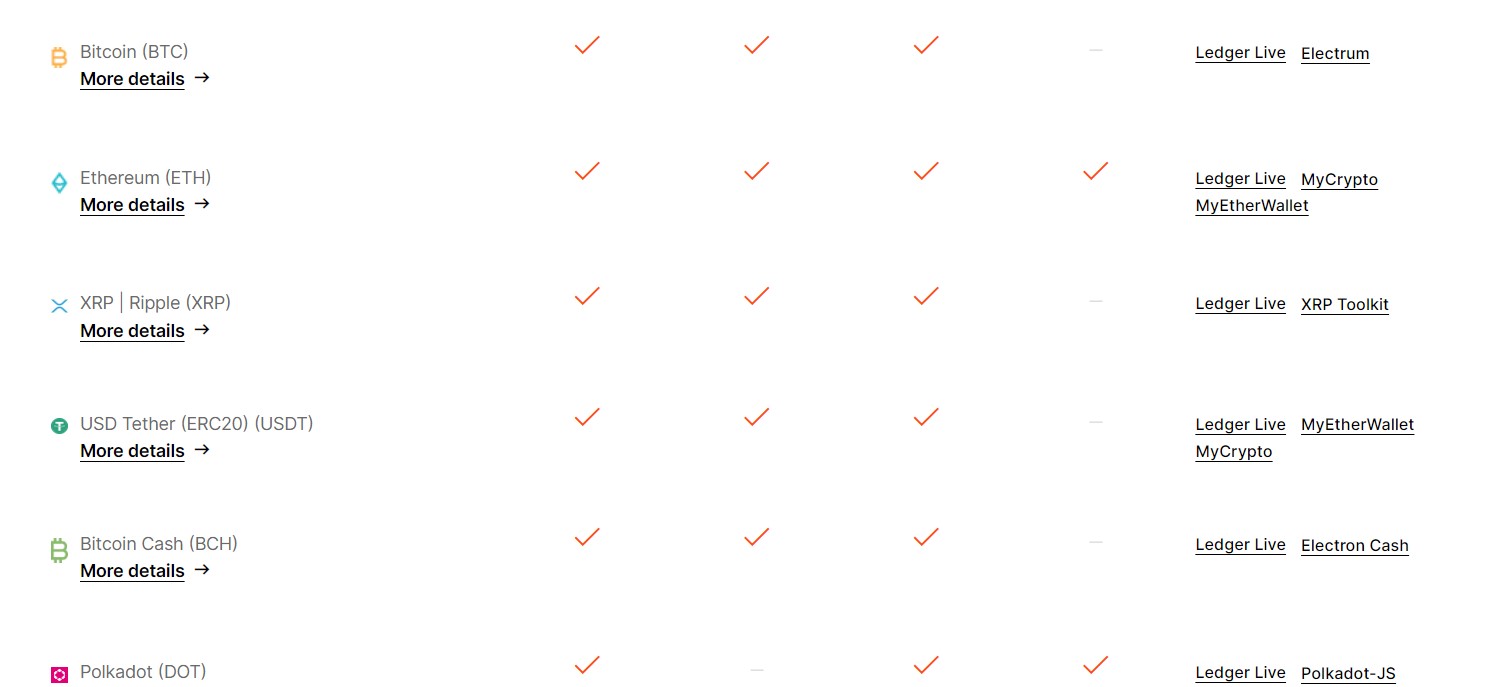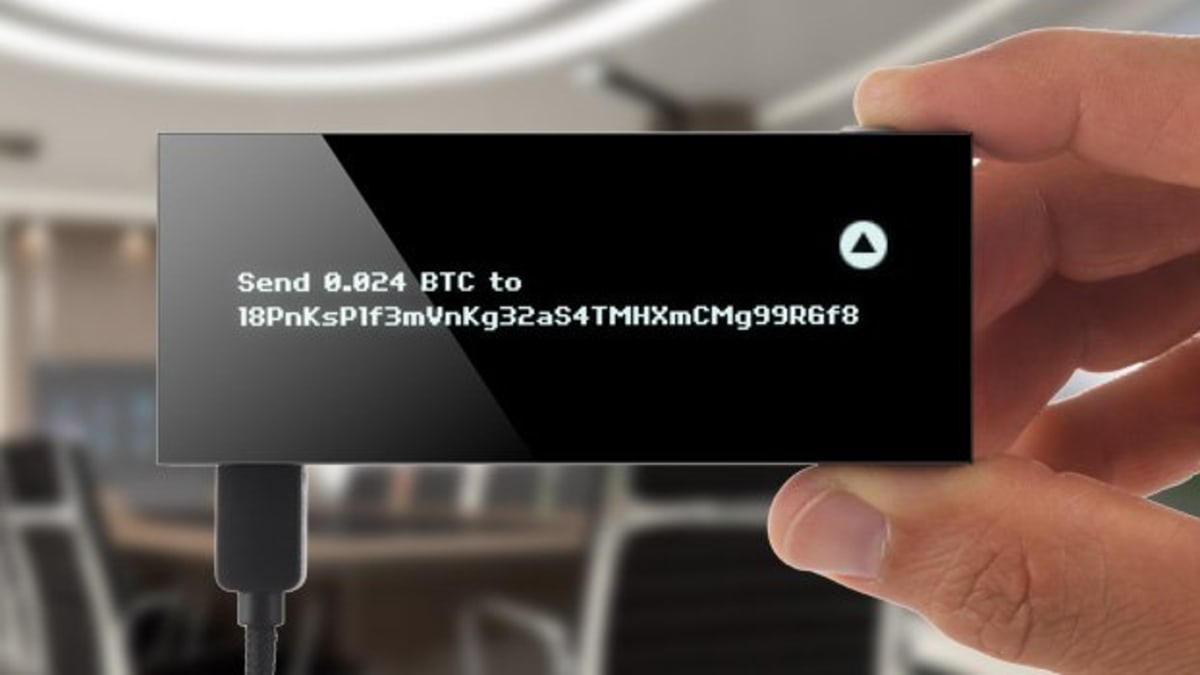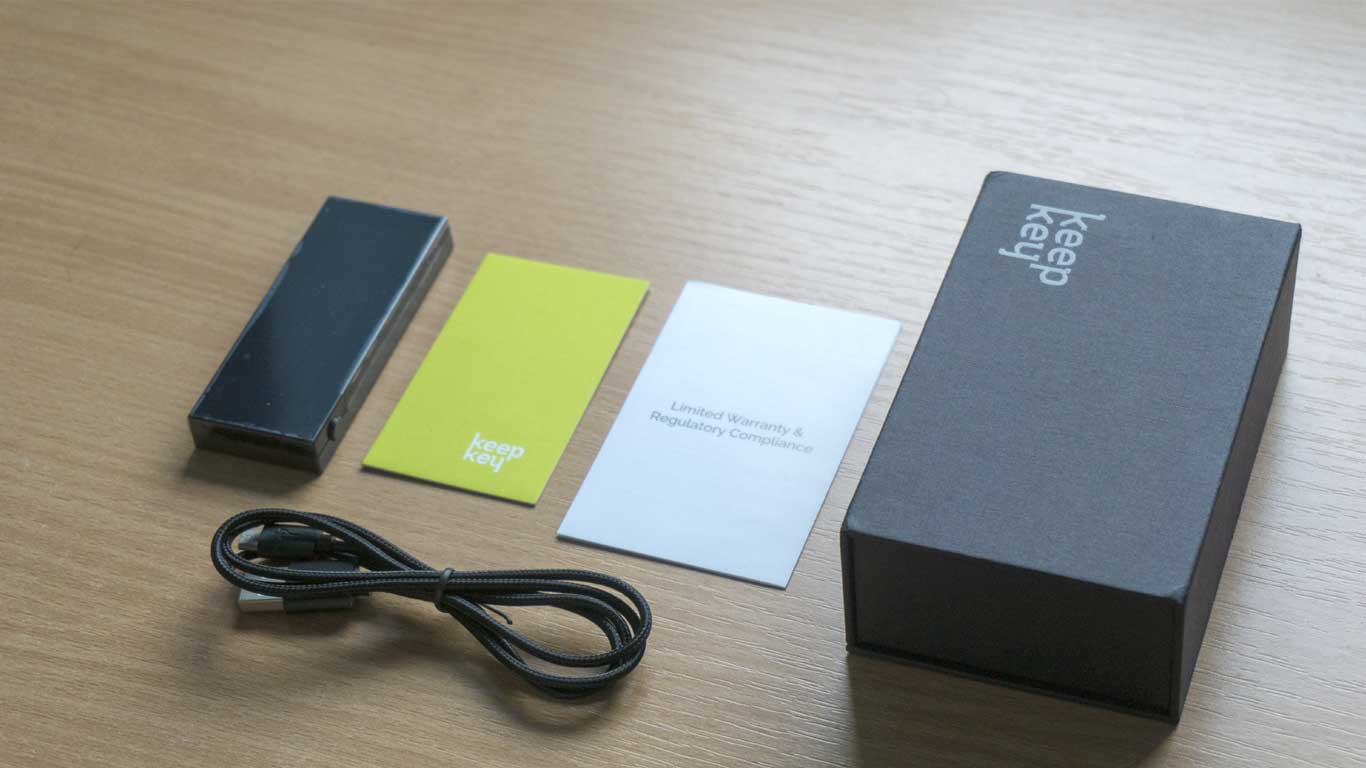Hackers always look for high-value targets to go after, and when the bull market is in full swing, there is no better asset market than crypto delivering 2x-es every other day.
For this reason, it has become a major requirement to keep your coins safe, and a hardware wallet is by far the best way to do this. Cold hardware wallets intend to do the same.
Your private keys and coins are stored on the device, not your computer. If you have computers infected with a keylogger, or a Remote Access Tool (RAT), your funds are at risk if you sign a malicious transaction.
The Ledger Nano S came out in 2014 from a company in France, and the Keepkey product hit the market soon after in 2015, an offering from a company in the USA.
Both these wallets come with built-in screens and work with Linux, Windows, and Mac OS X operating systems and a cable to connect the hardware wallets to the machine.
Amongst hardware wallets, there is another famous one called the Trezor One which was the only hardware wallet for some time before Ledger and KeepKey entered the running to make up for the lack of coin support.
KeepKey vs Ledger Nano S: Company Background
Keepkey has been produced by ShapeShift since its inception in 2015 and is a Bitcoin hardware wallet. It uses an HD (Hierarchical Deterministic) wallet, more like a small computer designed to store your private keys.
The idea for ShapeShift came to Erik Voorhees after the Mt Gox debacle. This made it clear that a decentralized open-source platform was required for the exchange, and trading of cryptocurrencies.
The resulting platform is community-owned, private, multi-chain, and non-custodial so that you alone have access to your supported coins.
The recent drop in price propels this ahead of other wallets when you are looking for crypto hardware wallets that offer a combination of value and security and support for more coins.
The Ledger Nano S is produced by Ledger LLC which was originally started by 8 experts. They all had completely different backgrounds like cryptocurrency, entrepreneurship, and security but one aim of making security solutions for blockchain applications.
As of 2022, they have over 800 employees around the world. They take advantage of their proprietary operating system (BOLOS) which is used on Ledger products, or on a white-labeled hardware wallet for business solutions.
KeepKey vs Ledger Nano S: Price Point
The price is what you will ask for when it comes to a new product. It’s the same with hardware wallets. Let’s compare where both these products stand in this category.
Keepkey takes the cake in this category and costs only $49 having reduced its price in the recent past to attract more customers.
The Ledger Nano S is a little more expensive at $59 but surely you can find lowered prices during Amazon or Cyber Monday sales.
KeepKey vs Ledger Nano S: Supported coins
One of the bigger Keepkey vs Ledger Nano S battles is which of the thousands of crypto coins from the markets you can store on these wallets.
Keepkey‘s list of supported coins is long and includes more than 40 coins and 46+ ERC-20 tokens. Many coins like Bitcoin, Ethereum, Bitcoin Cash, and Ethereum Classic are supported, but Ripple is missing from this list.
Ripple has a fervent community behind it and this only means that Keepkey will take note at some point and add it.
Ledger Nano S has 1150 coins supported on their hardware wallet which includes Bitcoin wallet software, and support for Ethereum Classic, and Bitcoin Cash.
The list of 1000+ coins also includes Ripple which is a major miss from Keepkey’s list.
KeepKey vs Ledger Nano S: Software Compatibility
Keepkey supports software wallets like Mycelium, Electrum, Multibit HD, and its own Ledger Live platform.
The Ledger Nano S has software compatibility for famous third-party wallets like MetaMask, Binance DEX, Kyber Network, and many other external wallet options. You can interact with, send, and receive your favourite coins.
KeepKey vs Ledger Nano S: How secure are your private keys?
Both of the hardware wallets mentioned in the list do not lack security features as that is the main reason for their purchase. But selecting the right hardware wallet is paramount as this lets you get a good night’s rest.
Keepkey hardware wallet supports similar security features as Trezor and Ledger hardware wallets but only has one chip in it like the Trezor model, unlike the Ledger Nano S that uses the two-chip architecture.
The Keepkey screen is larger in comparison to its competitors and allows the user to read what they are about to sign off on. There is also an option for a hidden wallet that is accessed via a secret passphrase using which you can have your more precious coins separated from the main wallet.
To recover your wallet when it is stolen or lost, you will need your 12-word Recovery Seed which is generated when you first set up your device. Keepkey supports the use of a 4-digit pin to authenticate any transactions.
Keepkey also mentions that it is virus and malware proof so that should allow you to be relaxed once you decide to buy it.
The Ledger Nano S uses a dual-chip architecture (ST31/STM32 with Certification level CC EAL) and the integrity of its firmware is guaranteed by cryptographic attestation.
You can use a regular USB port on a machine running Windows, Linux, or Mac OS X to set it up with your 24-word recovery seed phrase. This phrase helps to retrieve your coins in case your wallet is ever stolen or broken.
Any transaction you make will be confirmed with the physical buttons on the device and will be displayed on the embedded OLED screen. You can easily read through what you are accepting.
You will also have to punch in your 4-digit pin code to access the contents of your wallet every time you plug into a machine.
With the FIDO Universal two-factor authentication standard, the Ledger Nano interacts safely with Google Drive, DropBox, or GitHub. Without any activity for a preset period, the Ledger Nano will automatically lock itself to prevent any malicious practice.
Your private keys and your recovery phrase are both not known by Ledger or any third party as the private keys are stored on the Secure Element.
The recovery phrase is never displayed on a computer screen to prevent it from being shown on an infected machine and stolen from there.
The setup process of the Ledger Nano S can be completed without the use of any system or the internet hence isolating the process from being hacked.
KeepKey vs Ledger Nano S: Size & Design
The Keepkey hardware wallet is larger when compared to the Ledger model. This wallet is made of aluminum metal and polycarbonate.
The weight of the Keepkey is more than the Ledger or Trezor model hardware wallets that are considered to be its competitors. The Keepkey’s dimensions are 38 X 93.5 X 12.2 mm, and the large size makes it inconvenient to lug around in your pocket.
It makes perfect sense that the look of the hardware wallet is not high on the list when you are making a decision about which one to buy.
Your decision is going to be based on which of the products convinces you about its important security feature. The appearance does give an idea about how usable the product can be and how long it will last you.
The Ledger hardware wallet uses brushed stainless steel and plastic for its body composition. Its weight comes to a measly 16.2 grams, which makes it much lighter than the Keepkey model being compared, and also one of the lighter hardware wallets in the market today.
The Ledger Nano uses the ST31H320 and the STM32F042 chips and has dimensions of 98 X 8 X 9 mm. According to its reviews, The Ledger nano has good drop resistance partly due to its rotating cover which provides a second degree of protection.
KeepKey vs Ledger Nano S: Screen size
The Keepkey screen is a 3.12″ (256 X 64 pixels) OLED screen and the large screen makes the device look more premium other than the much bigger form factor.
The screen on the Ledger Nano S is 1″ (128 X 32 pixels) which is considerably smaller than the screen on the Keepkey device and does not bode well for user experience.
KeepKey vs Ledger Nano S: Setup & Initialization
The Keepkey wallet is easy to set up, and the hardware setup can be completed in just a couple of minutes. You will need to connect the micro USB cable that comes with it to proceed.
Other contents of the box are the wallet itself, the aforementioned USB cable, a paper card to write your recovery seed on, and a leather case to safely keep that card in.
Navigate to the URL in the user manual and install the corresponding Chrome extension to interact with its main functions by connecting the wallet to the computer.
Once the hardware is connected, you will be able to physically verify any transactions via the glassy OLED Keepkey screen with a click of the physical button on the device.
After the extension, you will be required to ‘initialize’ the wallet, where you will set pin codes for your device. After this, you can generate a recovery seed to use if you lose your hardware wallet and create private keys.
Something you should keep in mind is that there is no way to save your progress in the initial setup stage. So if you have something come up in the middle of finishing your setup, you will have to start over with the process.
This does not lend itself to a great user experience. That being said, the chrome extension and the Keepkey have simple interfaces with instructions.
This makes it easy to get started with the hardware wallet and gives them full control over the device.
There are also beautifully designed screens to take you through the process of adding multiple accounts, viewing transactions, and sending and receiving funds.
When you want to get started with your Ledger Nano S, connect it to your USB port, and install its chrome app by going to my.ledgerwallet.com.
Then you can follow the instructions on your screen after pressing only two physical buttons on the device. Click ‘Device Setup’, and you will be walked through the steps to make sure your hardware wallet is ready to use.
The user interface for the Ledger is simple to understand and does not need any special instructions in this article.
A drawback of this approach is that Chrome is not the only browser used by wallet users and is based on individual preference. A platform-agnostic approach would have been better and would have been one of the huge differences between Ledger and its main competitors.
But when you are making a tough decision like this which will ultimately affect the company’s reputation, you need to take into account whether you will be able to get the required security certificates on the browser of your choice.
For this reason, Chrome was the easiest and safest choice
The OLED screen is one of the unique differences between the Ledger Nano S and its predecessors, which considerably bumps up the usability of the hardware wallet.
You can press the right button to set up your hardware wallet from scratch and then choose a pin code. Or you can press the left button to input the recovery passphrase to regain access to your other hardware wallet.
The next step is to read and write down your password recovery phrase, which is displayed on the screen word by word. Remember that the order of the words matters.
On confirming that you have finished noting down the backup seeds, you will be asked to select random words from your passphrase to make sure you have the right one.
Once you have completed this step, your device is configured and ready to be used. All that is left to do is install the Ledger Apps on your machine and connect it to your wallet.
Another way to set up your hardware wallet is to install the Ledger Live app for your desktop, and this makes it easy to install any new apps on the device for multiple coins supported.
Make sure to store your “Recovery Sheet” in an accessible but safe place in case something happens to your wallet or you just input your PIN code incorrectly thrice. At this stage, you will need to input those 24 words again.
A major pro of the Ledger Nano S is that the screen is brighter than the Keepkey or the Trezor model, which increases the experience of the user.
KeepKey vs Ledger Nano S: Privacy
Privacy is largely dependent on the software wallet that is used to make the transaction and ultimately, if that is not secure, your wallet may be drained.
Keepkey has a working high-security integration with Electrum, Keepkey’s Chrome extension, and MultiBit HD. Out of these, Electrum is widely considered to be the most private.
The Ledger Nano S works with a lot of third-party wallets like MetaMask and this exposes it to more ways of being taken advantage of. At the end of the day, you are your financial advisor and should take decisions about which wallet or contract to interact with.
Conclusion – Which One should you buy?
When you get into the market to look for cold hardware wallets, you mostly have to choose between three wallets, i.e. the Ledger Nano S or the Keepkey wallet.
These three wallets have pros and cons, and it comes down to you choosing whether the price is the deciding factor or the larger screen.
The Ledger Nano S is cheaper when you compare Keepkey vs Ledger Nano S. Also, both compared devices allow you to stake your coins and earn passive income off of the following coins: Ethereum, Ethereum Classic, and Binance coin, amongst many others.
When it comes to the physical aspects, it heavily depends on how you are looking to use the wallets in question. The Ledger device has a smaller screen which will be less prone to breakage.
The Keepkey you have a larger display, and the screen will be useful to read through the transactions you are signing off on, hence providing another level of security.
The information provided in this article should make your decision very simple if you know the kind of devices you are looking for. Also, you need to make a decision if you want a larger screen or not.
The Keepkey vs ledger debate factors in that both these cryptocurrency wallets do the job they are intended for – to leverage blockchain technology to make your transactions safe and keep all your coins safe from hackers.
Check out how Keepkey and Ledger Nano S compares to other hardware wallets:
- Trezor Vs Ledger Nano S
- Billfodl vs Cryptosteel Cassette
- Ledger Nano X vs Trezor Model T
- Ledger Nano X vs S
- Keepkey Vs Trezor
- Bitcoin Transaction Accelerator: 5 Services to Unstuck Your BTC - September 23, 2023
- What Is Bitcoin Private Key? Everything You Need To Know !! - June 2, 2023
- Best Cardano (ADA) Wallets To Use In 2024 - May 7, 2023

